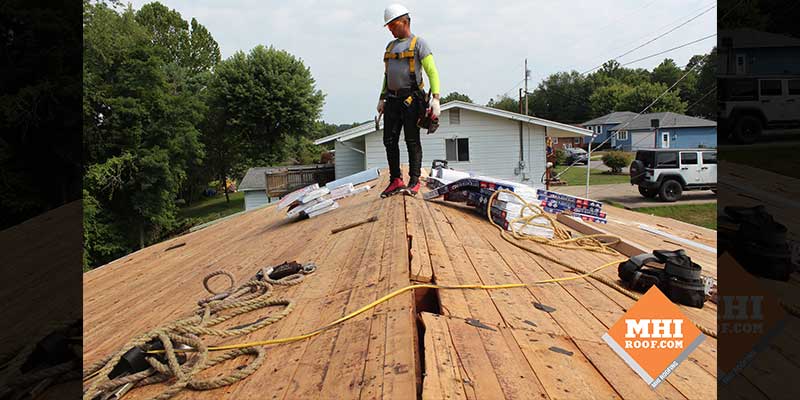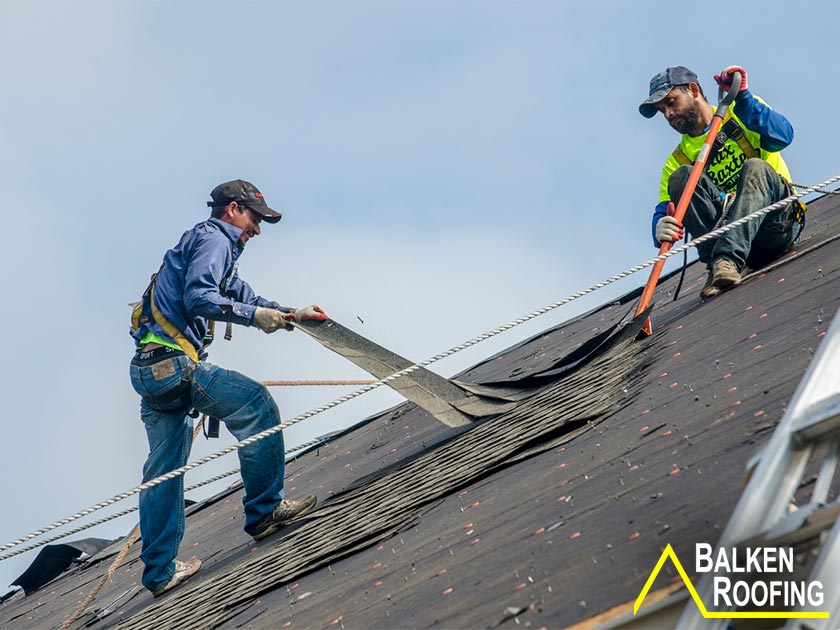Roof Replacement: Expert Providers for a Long-Lasting Roof
Evaluating the most effective Roof Covering Materials for Replacement: A Thorough Evaluation of Toughness, Expense, and Aesthetic Appeal
Picking the ideal roofing material for substitute involves a mindful analysis of a number of vital variables, including resilience, cost, and visual charm. Each choice provides unique benefits and downsides; for circumstances, asphalt tiles are budget-friendly yet shorter-lived, while metal roofs guarantee longevity at a greater financial investment. Moreover, the visual effect of materials like clay floor tiles can not be ignored, despite their premium cost factor. Recognizing exactly how these components interact can substantially affect the decision-making process. As we check out these elements additionally, the implications for your particular circumstance come to be significantly relevant.
Overview of Roof Products
As property owners increasingly focus on longevity and power efficiency, understanding the various roof covering products offered for replacement comes to be vital. The selection of roofing products directly influences not only the visual charm of a home yet additionally its long-lasting efficiency and upkeep costs.
Amongst the most typical roofing products are asphalt roof shingles, steel roof, and tile. Asphalt roof shingles are favored for their price and simplicity of installment, making them a prominent selection for lots of household applications. Metal roof covering, that includes products such as steel and aluminum, supplies phenomenal resilience and power efficiency, usually reflecting warmth and reducing cooling expenses. Floor tile roof covering, frequently made from clay or concrete, is treasured for its longevity and aesthetic allure, supplying a distinctive appearance that can boost a home's value.
In addition, more recent materials such as synthetic shingles and eco-friendly roof covering systems are obtaining grip. Synthetic options imitate standard products while giving boosted durability and lower maintenance demands. Eco-friendly roof coverings, which incorporate vegetation, contribute to energy efficiency and biodiversity.
Resilience Assessment
When assessing roofing materials for replacement, durability is a vital aspect that house owners need to think about. The life expectancy and durability of roofing materials directly influence long-term maintenance and replacement expenses. Different materials display differing degrees of longevity, making it important to understand their efficiency under environmental stressors.
Asphalt shingles, while preferred for their cost-effectiveness, commonly last 15 to 30 years and might call for more regular substitute due to damage from UV direct exposure and severe weather condition. On the other hand, steel roofing provides amazing toughness, with a lifespan of 40 to 70 years and resistance to wind, fire, and bugs. Additionally, clay and concrete tiles can endure rough problems, frequently lasting longer than 50 years, although their weight necessitates a durable structural assistance system.

Cost Comparison
Considering the financial implications of roofing materials is essential for property owners preparing a replacement. The cost of roofing materials can differ dramatically based upon variables such as product kind, installment intricacy, and local rates distinctions.
Asphalt tiles are among one of the most economical alternatives, usually varying from $90 to $100 per square (100 square feet), making them a popular choice for budget-conscious house owners. On the other hand, steel roof covering can cost in between $250 and $700 per square, depending on the kind of steel and coating picked. While steel roof coverings tend to have a greater ahead of time price, their long life and energy efficiency might cause price financial savings with time.
Clay and concrete ceramic tiles are likewise on the higher end of the range, balancing between $300 and $600 per square. These materials supply durability and visual allure however need a substantial first financial investment.
Finally, slate roof, known for its extraordinary toughness and ageless appearance, can vary from $600 to $1,500 per square, making it one of the most expensive choice. Homeowners must weigh the preliminary expenses versus the anticipated lifespan and upkeep requirements of each product to make a notified decision.
Visual Considerations
Visual factors to consider play a crucial function in selecting roof covering materials, as the roof covering considerably influences a home's general appearance and aesthetic charm. Property owners typically seek materials that enhance their architectural style and boost the visual appeal of their residential property. The shade, appearance, and account web link of roofing materials can significantly influence the total aesthetic.
Materials such as asphalt roof shingles offer a variety of shades and styles, making them a popular selection for property jobs. In comparison, steel roof covering gives a sleek, modern-day look and is readily available in countless finishes that can suit contemporary styles. Standard choices like clay floor tiles or slate can stimulate a classic elegance, appealing to those who prefer timeless looks.
Furthermore, the assimilation of roofing products with bordering elements, such as home siding and landscaping, is important. A natural color scheme and unified structures can elevate a home's outside and add to its worth. Home owners ought to additionally think about just how the picked roofing product interacts with all-natural light, as this can influence the roofing system's appearance throughout the day. Inevitably, choosing visually pleasing roofing products needs cautious consideration of individual image source preference, architectural style, and the total vision for the home.
Last Suggestions
Selecting the appropriate roofing product can substantially improve a home's durability and aesthetic allure. roofing contractor. Based on our evaluation of resilience, price, and aesthetic aspects, we recommend 3 key choices for home owners thinking about a roof covering replacement
First of all, asphalt tiles remain one of the most popular option as a result of their affordability and convenience. They offer a great equilibrium of cost-effectiveness and protection, making them suitable for most domestic applications. Homeowners need to consider their longevity, as they usually last 15 to 30 years.

Last but not least, for those seeking an upscale visual, slate or tile roof covering uses unrivaled sophistication and longevity. These products come with a steep price tag, their life-span can exceed 100 years, making them a worthy investment for deluxe homes.
Ultimately, the most effective choice will rely on individual budget plan, visual preferences, and regional environment factors to consider. Property owners need to talk to a roof specialist to evaluate their certain demands.
Conclusion
To conclude, picking the suitable roof product demands a careful assessment of longevity, cost, and aesthetic charm. Asphalt shingles supply an affordable solution with modest long life, while steel roofing excels in toughness and power efficiency. Clay and concrete tiles, although pricier, substantially boost aesthetic allure and withstand severe weather conditions. Ultimately, the decision should align with individual budgets, design preferences, and local climate factors, emphasizing the importance of professional consultation for informed choices.